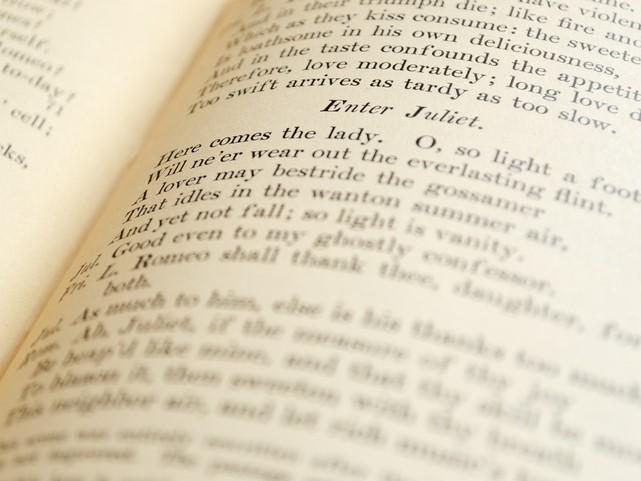
Using poetry to solve problems

Poetry has many benefits. From developing empathy and providing support for mental health needs, to reconsidering our relationship with nature and even potentially improving immune system and lung function. Poetry has also been shown to help give voice to marginalised communities and to provide an effective conduit for communicating research to diverse audiences.
It can also be used to solve problems. This is a tool that can be used by academics and students alike.
Poetry? Solve problems? How?
By actively targeting the creative incubation period.
Imagine that you are working on a specific task or problem and you reach a point where you become completely stuck. One of the ways you might overcome this is to step away from the problem, allowing your subconscious to process the issue and potentially come up with a solution. This is what is known as the incubation period. This period of incubation has been shown to help facilitate creativity, which in turn can lead to unique solutions for tasks that need completing or problems that need solving.
- Creative writing to hone critical thinking
- THE Campus spotlight: Creativity in higher education
- Social sciences, humanities and arts are critical for sustainability
However, this is a very passive approach to targeting the incubation period, as by acting in this way you are hoping that your brain will eventually come up with a solution and then tell you about it when you are cooking dinner, watching Netflix or waiting for a train.
An alternative approach is to actively target this incubation period, by thinking about the problem in a completely different way; for example, by writing a poem.
Write a poem? Me? How?
By using basic poetic forms to help provide a structure to your creativity.
Asking people to “write a poem” is quite a daunting task, perhaps akin to “make an invention” or “do some science”. However, we can break down this process into more manageable steps to help us actively target the creative incubation period.
Step 1: List
Begin by writing a list poem. List poems are poems in which you list everything that you associate with a particular topic. They can be physical objects, but also sounds, smells, emotions or anything else you can think of. Set yourself a time limit of 60 seconds, and list all the things that come to mind when you think about your problem.
As an example, here is a list poem that I wrote about the albedo feedback effect – a process where changes in the amount of ice and water alter the reflectivity of a surface and thus the extent to which it heats up – in the Arctic:
White, climate change, snow, ice, progression, breaking, waves, runaway steam trains, distance, edges, reflection, relentless, process.
Step 2: Write
Poetry does not have stick to any specific form. However, these forms can really aid the writing process, providing the scaffolding on which to develop your confidence and skillset. There are many different forms of poetry that you can use to help structure your creativity, and the website Shadow Poetry provides an excellent resource for many of these, including worked examples. Having picked a form, you can then use the list poem that you have just created to help you in your writing.
To give an example of what this might look like in practice, let me to introduce you to one of my favourite poetic forms: the nonet.
The nonet is a nine-line poem, where each line contains a specific, descending number of syllables. The first line contains nine syllables, the second line contains eight, the third line contains seven, and so on, until the last line of the poem, which contains a single syllable. As an example, here is a nonet that I wrote following the list poem in Step 1:
Sunbeams two-step over white blankets
gliding painlessly between worlds,
then stray too close to the edge
where looming Arctic waves
trap their latent heat.
Ending the dance,
and leaving
only
sea.
Step 3: Reflect
Having written your poem, it is now time to return to your problem. Has writing this poem revealed any new potential solutions or potentially exposed a mistake in your previous thinking?
Even if your poem did not lead to a direct solution to your initial problem, by actively targeting the creative incubation period you have probably opened up several additional learning opportunities to reflect on. For example, you might have discovered a gap in your understanding, corrected a previously held misconception, or even identified an area for future research.
In writing your poem you have also potentially created a medium through which to engage new audiences with your work, meaning that you could even use this poem as a starting point for collaborative problem-solving.
So the next time you – or your students – come across a problem that you just don’t seem to be able to solve, put it aside and pick up your pen, keyboard or mobile device and do these three simple steps: list, write, reflect. At the very least it beats waiting for an idea to arrive on the 9.11am from Crewe.
Sam Illingworth is an associate professor in academic practice at Edinburgh Napier University and author of Science Communication Through Poetry. His work focuses on using poetry to develop dialogue between scientists and non-scientists.
If you would like advice and insight from academics and university staff delivered direct to your inbox each week, sign up for the Campus newsletter.
Additional Links
Read more about Sam’s work focused on using poetry to communicate science.
For more articles related to this topic, see our spotlight collection Making the case for arts and humanities.


